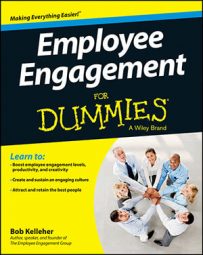Employee engagement is more than a program; it entails a cultural shift — a change in how things are done and communicated from the top to the bottom of an organization. Engagement can't be shunted to the end of every meeting, where it will stand a higher chance of being given short shrift.
It's no one person's job; it is an ongoing part of business. And after you embark on systemic employee engagement, there is no finish line — it's a journey without a destination.
Often, people confuse employee engagement with employee satisfaction. This is a mistake. You can always throw money around or offer perks to boost employee satisfaction. But satisfied and engaged are two very different things. Simply put, engagement boosts performance, while satisfaction does not. The last thing you as an employer want is a satisfied but underperforming employee — or worse, a whole cadre of satisfied employees in an underperforming business!
Having a bunch of happy and satisfied employees walking around is a-okay. Employee satisfaction very well may be an outcome of an excellent company culture. But unlike employee engagement, it shouldn't be your goal per se.
Engagement is not an end in and of itself. It's not about having things (for example, the best benefit program, the biggest workstations, or the highest bonus checks). It's not even about instituting a training program or a flexible workweek. Successful engagement is about acknowledging that a business is, in essence, like a society. When everyone pulls together with common purpose, both its citizens and its economy will thrive. Engagement is about people's heads as well as their hearts.
For engagement to exist, there must be mutual commitment between the employer and employee. The employer helps the employee reach his or her untapped potential, and the employee helps the employer meet and surpass its business goals.
To sum up, employee engagement is about
Mutual commitment between the company and employee
People
Relationships
Alignment
Shared purpose for creating the future together
Success of the business and its employee
Work environment and culture
Continuous communication
Opportunities for performers (and consequences for non-performers)
Staff development
Engagement is not about
Things
Having the best of every amenity
Avoiding making tough decisions
Pleasing all the people all the time

